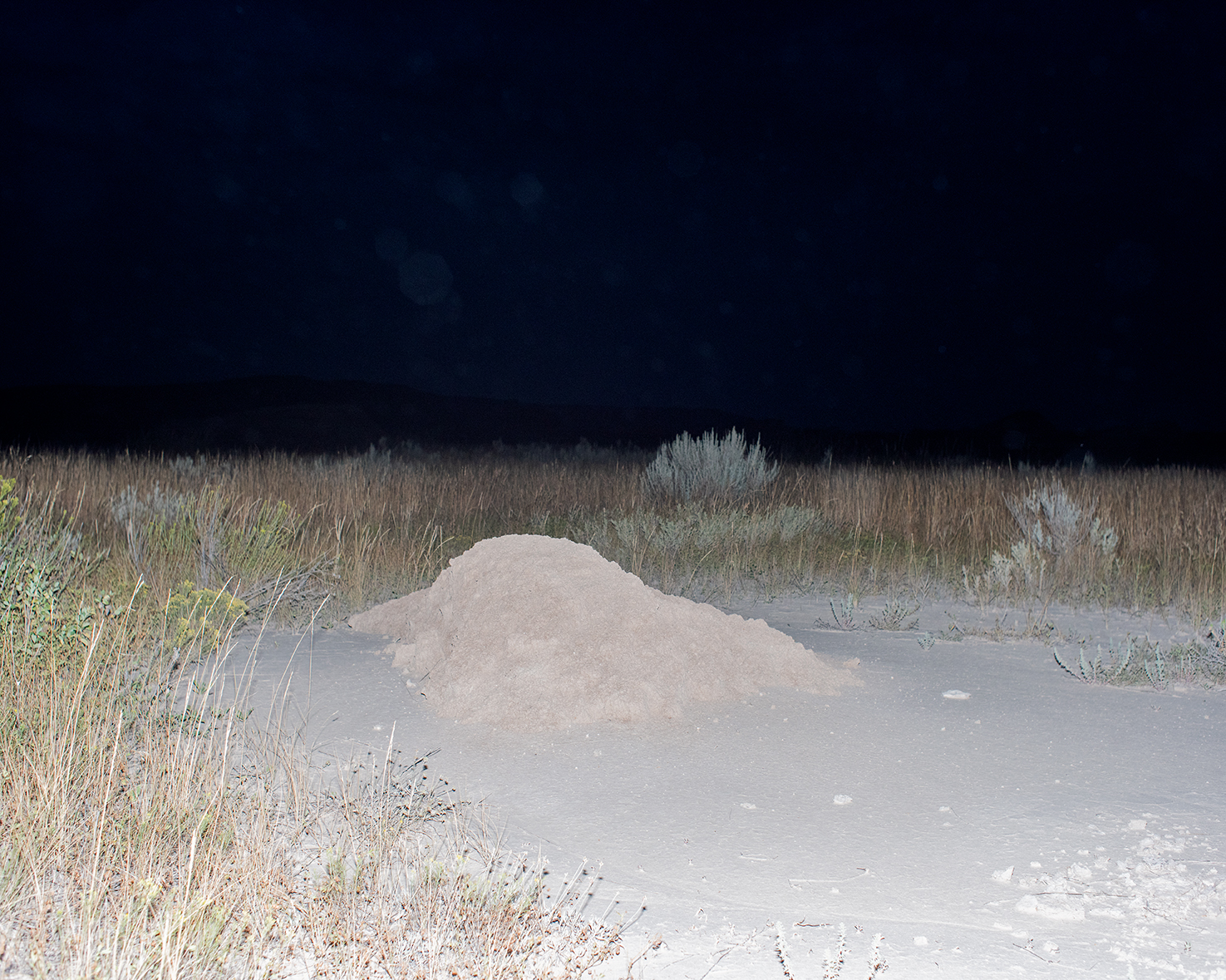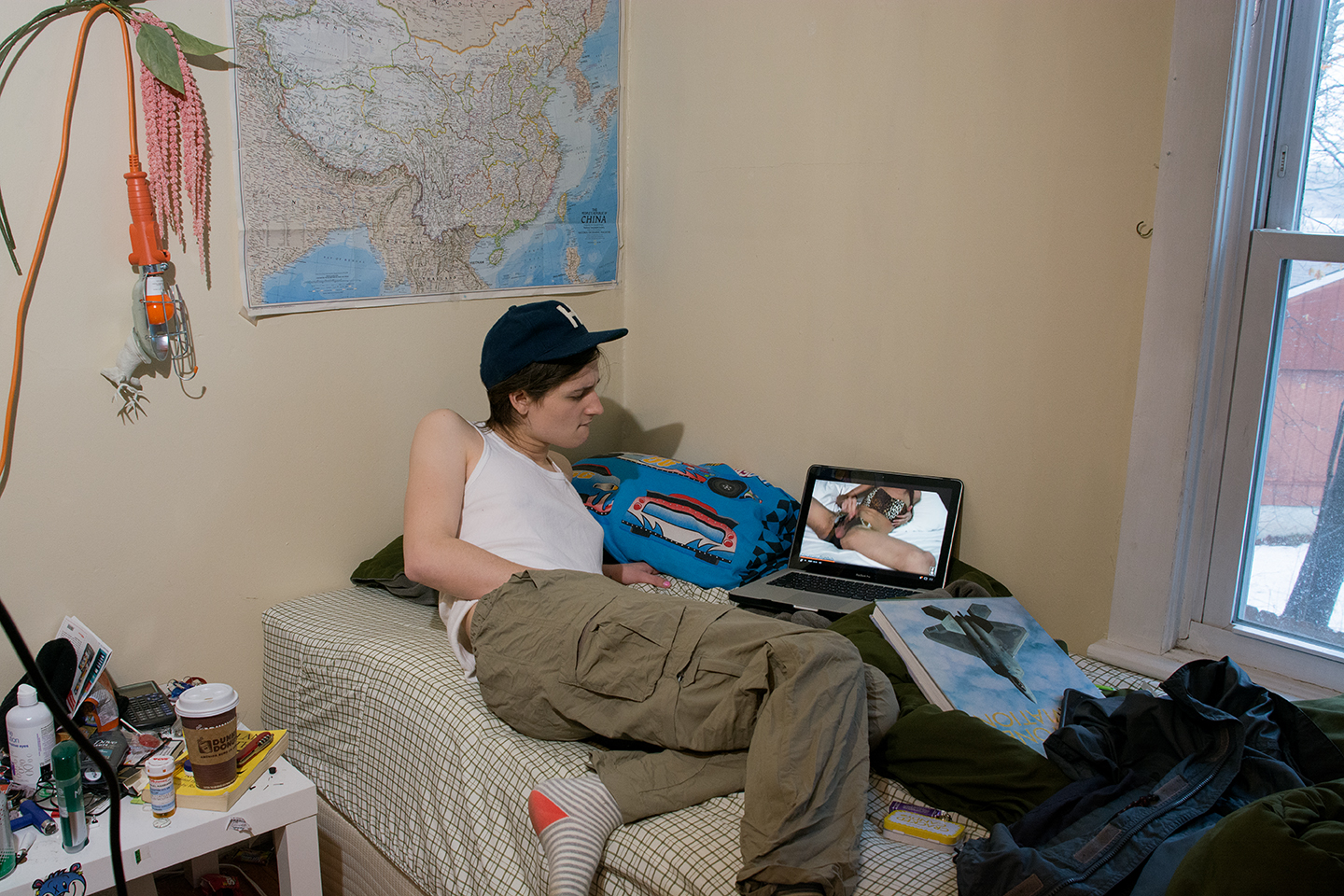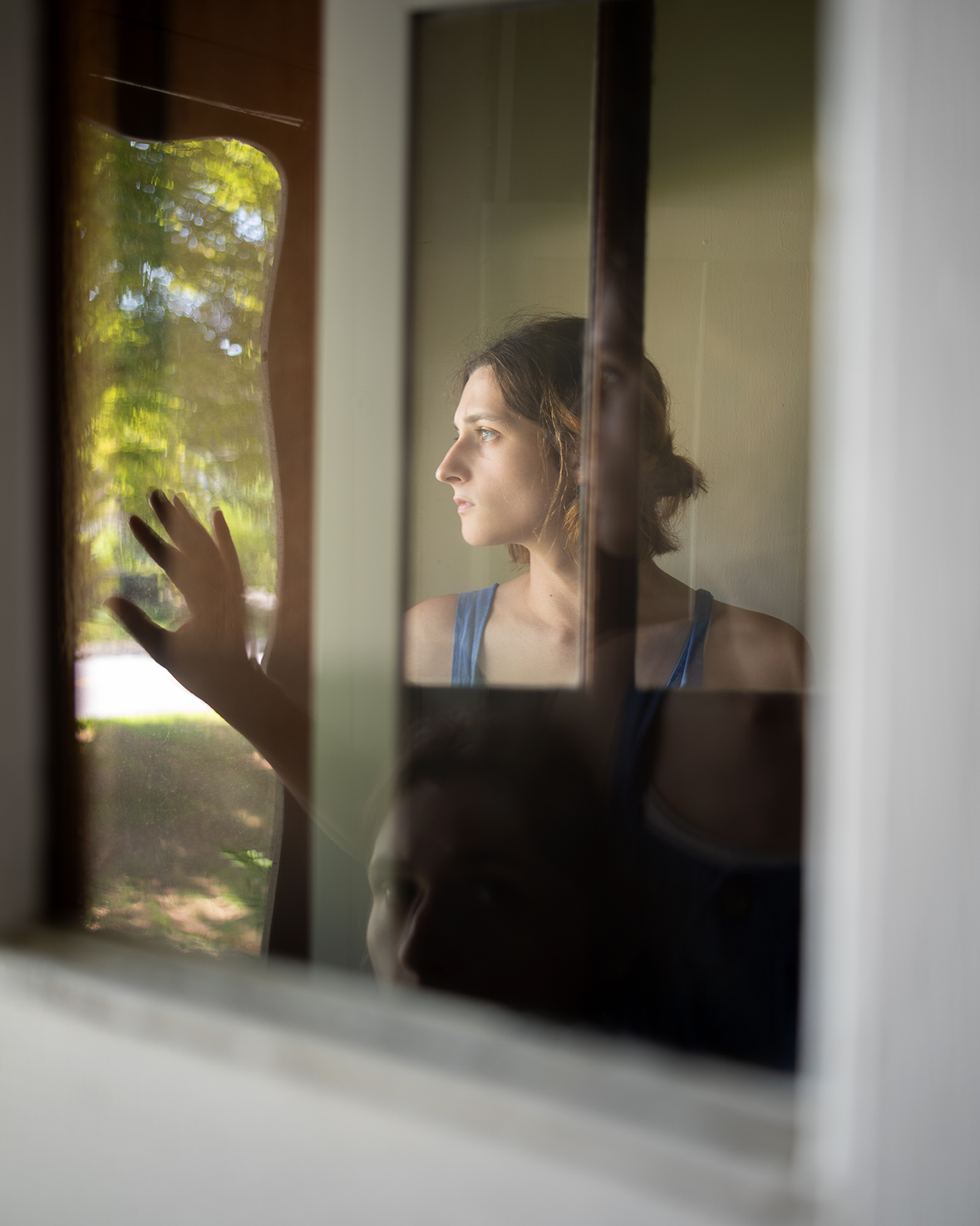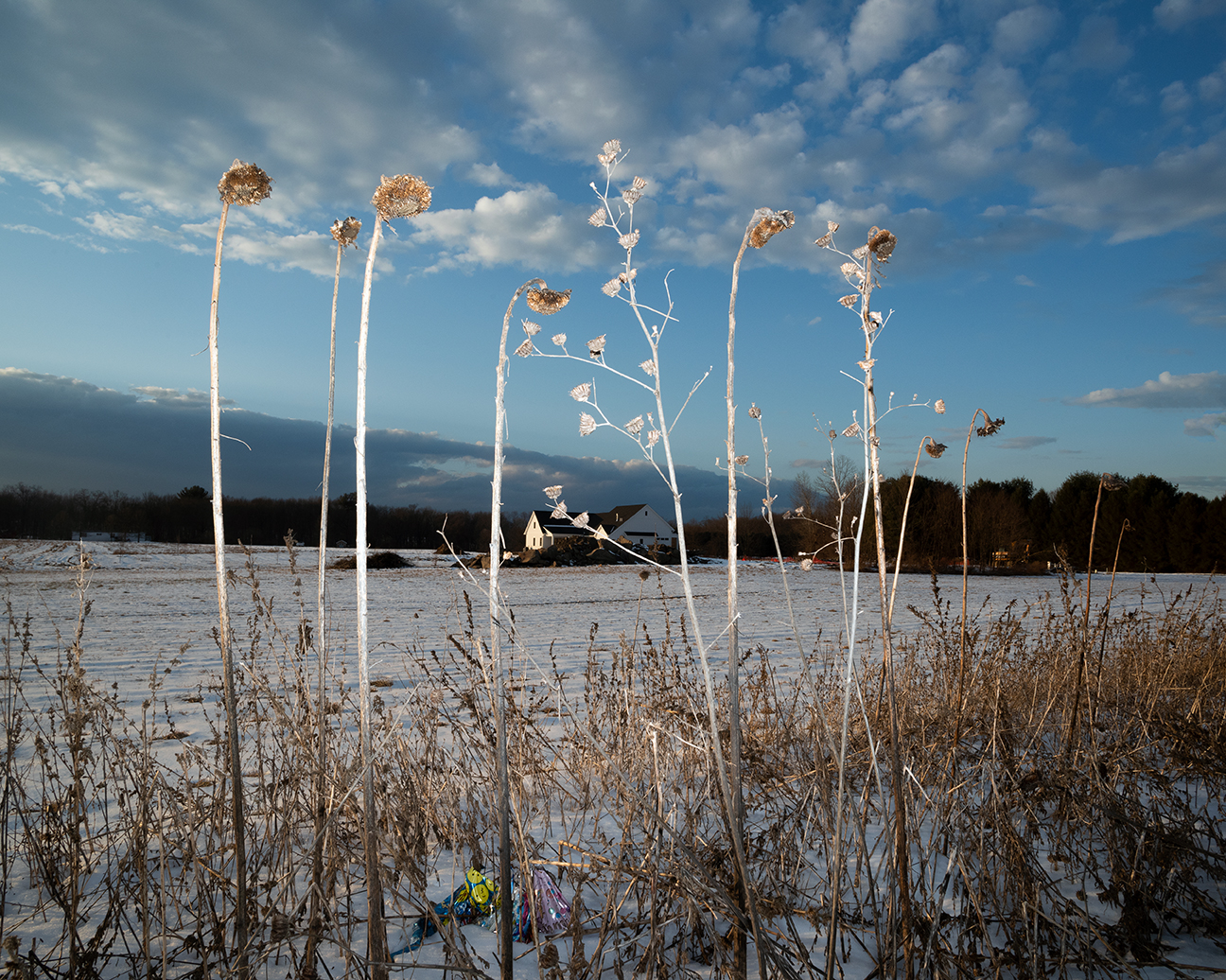
LEOR MILLER
In conversation with June T SandersJune T Sanders: Let’s start with the basics: who are you & and why do you make pictures Leor?
Leor Miller: My name is Leor Miller and I’m a photographer, writer, and musician from Evanston, IL currently based in Hudson, NY. Right now, I think the reason I make photographs is as a means of considering the mystery of being in the world and all that encompasses. I think it’s about the search for meaning that we’re all engaged in, about ways of creating meaning, and ways of understanding the world. I’m interested in looking at the self in relation to the world, the self in relation to the other, the self in relation to the self, and the self in relation to these intangible qualities of being. A lot of it started as a way of thinking about the ecstatic and mystical experience, but more recently I’ve been trying to open that to also considering the really terrifying and strange parts of being. I think photography’s relationship to reality is also essential to the photographic language I’m trying to use and photography’s ability to make the real seem unreal. But I’m also really interested in transcendence, the divine, and the many converging and diverging realities of this world, as well as coming from a mindset that there is something deeper than the physical stuff of being. I think the essential question is, “Who am I, and what do I do about it?” and trying to explore my own relationship to the mental and physical world, and from there comes these intermittent moments of deep understanding as well as deep confusion and wonder.
June: I'm interested in how this translates into the pictures you make. How do you go about making your images? Is the content or look of them related to these ideas? Or vice versa? Or is it more process based?
Leor: In terms of actually making the pictures, it varies a lot. I try to look for locations while I’m driving, whether I make the picture that day or whether I come back at a later time after trying to figure out what picture I actually want to make there. I also try to write down or draw my ideas when I have them, so I keep a notebook. A lot of the photographs start as small sketches in my notebooks, some sort of encounter or action or scenario which is representative of the idea I’m trying to deal with, or something strange or unreal, or trying to reference something historical or some sort of phenomenon or something symbolic. So a lot of them are previsualized and then other times, the inherent element of chance comes in and something else will catch my attention or I’ll try something different than the picture I was trying to make because I responded in some way to something or some action around me. And then there’s also when I’m not really staging or inserting myself into the picture at all, and I find something while I’m out photographing that excites me and I make the picture. So some of it is staged, some of it is completely unplanned, but most of it is balancing these two elements of the intentional and unexpected.
In terms of content and aesthetic, I think that it’s always about both. I use a lot of artificial lighting, mostly flash, because of the way it illuminates the world in ways that we don’t usually see with our eyes. There’s this Aldous Huxley quote about preternatural light and color and how a lot of classical painting uses elements of light and color to create transformational works of art, especially with regards to surrealism and religious painting. I don’t want to come off as saying I compare my work to the work of classical painters, but I do look at a lot of classical and religious painting, and I think that quote kind of solidified a lot of what I was doing in terms of light and the use of long exposure to create lighting situations our eyes don’t perceive in reality but that still look like “real” photographs.
When it comes to the visual content of the photographs, a lot of it is human engagement with nature: someone playing in flowers, or walking through the woods, or submerging themself in water. It’s about succumbing to the moment, it’s about how we experience clarity and bliss and confusion in nature, and how it is all much bigger than us. It’s also the implication of something happening inside or outside of the frame. A lot of the self-portraits feature me staring out of the frame at something that can only be imagined, because it’s not depicted; or some translucent streak of a figure moving about in space, implying what is and is not present, what can and cannot be seen, or photographed, or an abstraction. Did I see that, or was it a figment of my imagination? How much of this reality is hallucination? Did anyone else see what I just saw? And also the question of “What if?” I think it’s mostly about using the photograph as a means of asking questions rather than arriving at answers. Or for the more pointedly illustrative pictures, hinting at potential answers without trying to come to something definitive, or maybe using the photograph as a representation of a larger idea about the experience of being.



June: There is something really intriguing about how the artificial lighting, surrealism, reference to classical painting, self-portraiture, and the subtly gendered aspects of the work come together.
Leor: There’s definitely a gendered aspect to the work that I haven’t really addressed. I spent a few semesters of undergrad trying to make work that was explicitly dealing with the condition of transness–the violence, the beauty, and the anxiety of it. I think the work I’m making right now isn’t explicitly about transness, like I’m not trying to make “trans” pictures, but I think I bring a lot of that conceptual baggage to the table. I think it plays into these ideas of non-linear selfhood, the multiplicity of self, and the potential for something beyond the material world–transcending the body, that there is no fixed “self”, and the idea that there’s something deeper than what is physically here. But that these feelings also extend beyond transgender subjectivity–that the search for selfhood and meaning as well as fear and bliss drive everyone who is here in the world.
June: I struggle with this myself, which is why I wanted to bring it up. Like, how do we as trans artists and photographers make images and work that speaks to the trans experience or help us live and flourish in our own bodies, while also straying away from simple narratives, like you said: the ‘fixed self’. Create something otherworldly. I think that’s one of the reasons I’m so attracted to your pictures and your music.
Leor: Absolutely. It’s a question I think about a lot and am really still trying to find the answer to. In many ways, I don’t want to pigeonhole myself as a “trans artist” rather than an artist who is trans. I had a professor give me recommendations of artists to look at that they had thought would be relevant to my work, and half of those ended up being drag performers from the 70’s and 80’s–which isn’t something I’m opposed to, I’m really interested in drag–but at the time, and even still it felt like I was being put into this box of “trans artist” just because I was depicting myself in the world which is often inherently read as a commentary on transness. And sometimes it is, but most often it isn’t. Like I said earlier, I don’t really try to make “trans” pictures, or even “gay” pictures, but there is a part of my practice where I do make work about those ideas, though I’m not working on a cohesive project specifically about transness... sometimes I feel like I almost make those images out of obligation. But the work from a few years ago is very steeped in transness and queer theory, so I don’t know. I think the work has expanded a lot in its conceptual aims since then, though the work is always going to have some element of transness to it conceptually and philosophically, like I talked about before. I think that in certain ways, liberation looks like people of marginalized identities being able to make work about whatever they want, whether that is about the lived experience or if it’s about something totally different. But I think as artists and photographers who are trans, we should be working to express this multiplicity of being. We should be advocating for a wider range of expression. We should be rejecting capitalist commodification of the identity politic, and not feeling like we have to deal with “representation” if we don’t want to. Identity is much more incoherent than we allow it to be.


June: Your music is also a big part of your artist practice - do these two ever overlap for you? Or are they separate endeavors?
Leor: I think the reason I make music is very similar to the reason I make photographs: art as sensory philosophy, art as an expression of interior states, and specifically art as a reflection on being and the many strange feelings that encompass that. The relationship between music and photography is huge for me. When I make photographs, I choose the music I play in the car very carefully because music affects mood and the interpretation of visual and spatial phenomena. I haven’t really figured out a way to combine the two mediums into a singular project, but they definitely overlap. Recently I’ve been really interested in the way that music describes space and time in such different ways than photography does, and how that can potentially translate into the presentation of an exhibition. When I make music, I often work in the form of the album, which can often feel quite separate to the photo work I’m making. In many ways I think a big reason I started making photographs was so I could make album covers and posters for the bands I was in during high school, and from that I realized that I really loved making photographs.
June: How would you describe Hudson and how do you think it affects the work you make?
Leor: I think the work is less affected by the city of Hudson and is more about the landscape that the city is situated in. I’m from the Midwest, so the mountains and valleys and large stretches of land are really exciting to me because I didn’t grow up in that sort of landscape. The tallest mountain in my hometown is called Mount Trashmore because it’s just a landfill with a bunch of grass over it. I’ve gotten the opportunity to be more immersed in the landscape living somewhere that isn’t the suburbs–I try to go hiking often, and a lot of the work is made in that environment, wandering in the woods. It’s the first place where I’ve felt this sense of ecstasy in the landscape, but it’s also the place where I really learned to make pictures and took myself seriously while doing so.

June: Who or what do you find inspiration from? Are there any artists, collectives, projects, writers, etc that you’re particularly excited about right now?
Leor: I try to take inspiration from everywhere! I try to read as much as I can. I love reading photo theory, queer theory, religious writing, and a lot of other genres and ideas. I’ve read a lot about psychedelics in the past few years, and I really think a lot of ideas that are associated with the psychedelic movement play into my work–universal consciousness, the false division of spiritual and material...the idea that a big ailment of our times is that we’ve become so alienated from nature that we forget that we are, in fact, a part of it, that we depend on it, and that it is much bigger than us. And I think my own experiences with psychedelics have inspired my work a lot.
I’ve been poring over Dylan Hausthor and Paul Guilmoth’s book “Sleep Creek” recently. The way they work with nature and the weaving of myth and reality excites me a lot.
I love Genesis Breyer P-Orridge and am really interested in h/er ideas about the body and (P)androgyny and drugs and spirituality.
I love Barbara Ess’s work, and am very lucky to have worked with her on my thesis.
I love Lieko Shiga.
I love John Divola.
I love Ram Dass.
I love Eikoh Hosoe.
My close friend and roommate Jordon Soper also makes really amazing photographs that blow my mind.
I should probably stop there because now I’m just starting to list all the artists who inspire me, and I’m finding more and more people working in ways that excite me every day, and I’m sure I’ve failed to mention many people who have influenced and inspired me.
June: What’s next for you?
Leor: What is next for me! Who knows. I’m working on a really exciting magazine project that will probably be published next fall, hopefully around September. I’m working on a new album that will be released at some point. Trying to get my work into more shows. I’m only like eight months out of school, so most things in my life are still pretty up in the air. Waiting to hear back from a couple jobs, you know the drill. I’m mostly just trying to figure all of this out as I go along. I really appreciate you taking the time to talk about my work, it’s been a really wonderful experience. Thanks so much June. <3


___
Leor Miller is a photographer, writer, and musician from Evanston, IL currently based in New York’s Hudson Valley. Using the control of staged self-portraiture and digital manipulation, as well as the element of chance that is inherent to the photographic medium, her work deals with themes of selfhood, mystical and ecstatic experience, altered states of consciousness, the Other and the unknown, and the search for meaning.
http://www.leormiller.com/
